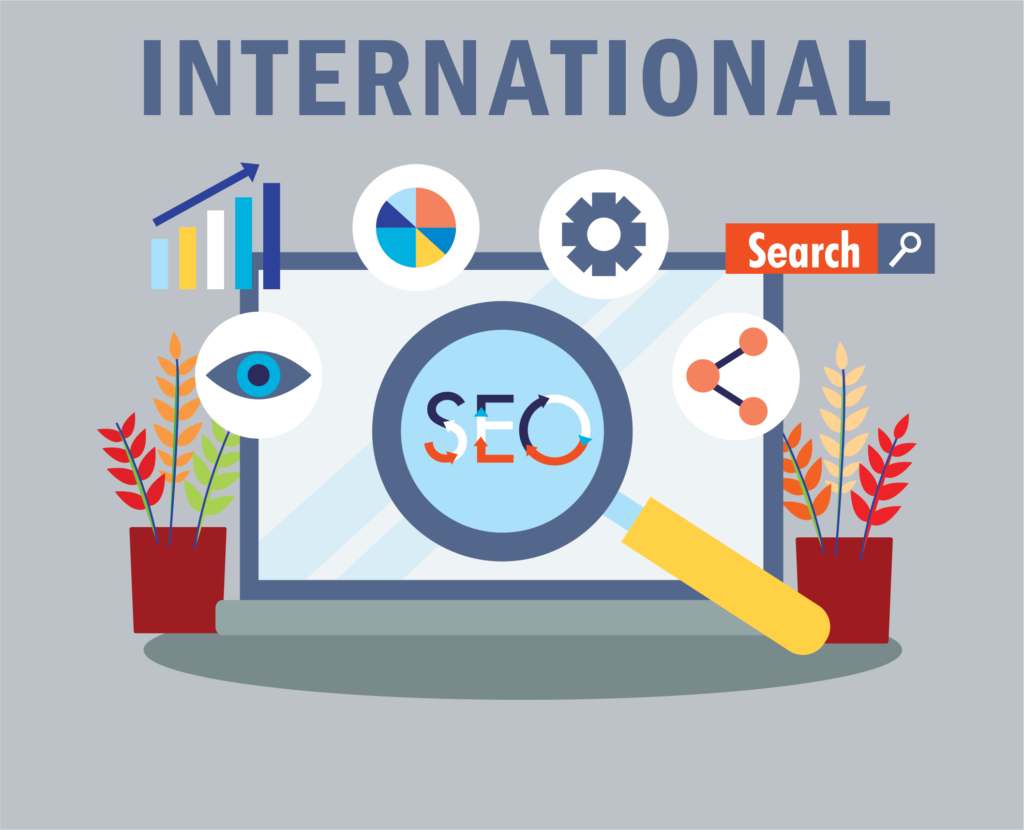Introduction
In the ever-expanding digital landscape, achieving global reach is a top priority for businesses looking to thrive in the international market. International SEO, when executed flawlessly, plays a pivotal role in this journey. In this comprehensive guide, we’ll delve into the intricacies of international SEO, shedding light on strategies and tactics that will propel your website to the forefront of search engine rankings.

Understanding the Importance of International SEO
International SEO is not merely an afterthought; it’s a strategic necessity. When businesses expand their operations beyond borders, their online presence should follow suit. The benefits are manifold:
Also Check Leveraging User-Generated Reviews for SEO Dominance 2023
1. Global Visibility
Expanding your SEO efforts internationally enhances your online visibility across diverse markets, making it easier for potential customers to find your products or services.
2. Increased Traffic
A well-optimized international SEO strategy can attract a steady stream of international visitors, boosting your website traffic and engagement.
3. Market Diversity
Different markets have unique preferences and trends. By catering to these nuances, you can effectively tailor your content and offerings to diverse audiences.
4. Competitive Edge
Outranking your competitors on a global scale not only establishes authority but also fosters trust among your audience.

Key Considerations for International SEO Success
To achieve international SEO success, meticulous planning and execution are imperative. Here are some key considerations:
1. Keyword Research and Localization
Identify relevant keywords for each target market, taking into account language variations and regional preferences. Utilize tools like SEMrush or Ahrefs to streamline this process.
2. Website Structure
Implement a logical and user-friendly website structure. Use hreflang tags to indicate language and regional targeting.
3. Content Localization
Create culturally relevant content that resonates with your target audience. This involves translating and adapting your content while considering cultural sensitivities and preferences.
4. Optimized Meta Tags
Ensure that meta titles and descriptions are optimized for each language and region. This can significantly impact click-through rates.
5. Mobile Optimization
Mobile-friendliness is crucial, as many international users access websites via mobile devices. Responsive design is non-negotiable.
6. Local Backlinks
Build a network of high-quality local backlinks to strengthen your website’s authority in each market.

Technical Considerations
The technical aspect of international SEO can be complex. Here are some advanced strategies:
1. Hreflang Implementation
Implement hreflang tags correctly to inform search engines about language and regional targeting.
2. International XML Sitemaps
Create XML sitemaps for each language/region, making it easier for search engines to crawl and index your content.
3. CDN and Hosting
Choose a content delivery network (CDN) and hosting that ensures fast loading times globally. Speed is a ranking factor.
Monitoring and Adaptation
The SEO landscape is dynamic, and international SEO requires continuous monitoring and adaptation. Regularly analyze performance metrics, conduct competitor research, and fine-tune your strategy accordingly.

Building Trust Across Borders
Trust is paramount in international SEO. Here are some trust-building strategies to implement:
1. Localized Contact Information
Display localized contact information, including phone numbers and addresses, prominently on your website. This instills confidence in potential customers who want to reach out.
2. Customer Reviews and Testimonials
Leverage customer reviews and testimonials from each target market. Encourage satisfied customers to share their experiences in their native language.
3. Trust Seals and Certifications
Highlight trust seals, certifications, and awards that are relevant to each market. These endorsements reassure visitors of your credibility.

Multilingual Content Marketing
Content marketing is a cornerstone of international SEO. Here’s how to excel in this aspect:
1. Multilingual Blogging
Maintain a blog in each language or region you target. Share industry insights, tips, and updates tailored to the local audience.
2. Video Localization
Consider creating localized video content with subtitles or voiceovers. Video is a powerful medium for engaging international audiences.
3. Social Media Localization
Adapt your social media strategy to each market. Post content that aligns with local trends and holidays.
Measuring Success
Tracking and measuring the effectiveness of your international SEO efforts is crucial. Key performance indicators (KPIs) to monitor include:
1. Organic Traffic Growth
Track the increase in organic traffic from international sources. Identify trends and capitalize on them.
2. Conversion Rate
Measure the conversion rate of international visitors. Optimize your website to improve this metric over time.
3. Keyword Ranking
Regularly check your keyword rankings in each target market. Adjust your strategy based on ranking improvements or declines.

Embracing Change and Adaptation
In the ever-evolving world of SEO, adaptation is key to staying ahead. Keep an eye on industry trends, search engine algorithm updates, and emerging technologies. Be prepared to pivot your strategy when necessary.
Final Thoughts
Outranking established articles in the competitive world of international SEO requires a comprehensive approach. By understanding the nuances of each market, implementing precise technical strategies, and continuously optimizing your efforts, you can elevate your website’s global visibility and authority.
Remember, international SEO is an ongoing journey. As you continue to refine your strategy, monitor performance, and adapt to changing circumstances, you’ll not only outrank your competitors but also establish a lasting international presence that resonates with your global audience.

FAQs on International SEO
1. What is International SEO, and why is it important?
International SEO is the practice of optimizing your website to rank well in search engine results pages (SERPs) across multiple countries and languages. It’s crucial for businesses looking to expand globally as it helps increase online visibility, attract international traffic, and stay competitive in global markets.
2. How do I perform keyword research for international SEO?
To perform keyword research, use tools like SEMrush, Ahrefs, or Google Keyword Planner. Focus on identifying relevant keywords for each target market, considering language variations and regional preferences.
3. What is the significance of hreflang tags in international SEO?
Hreflang tags are HTML attributes used to inform search engines about the language and regional targeting of your content. They help ensure that users are directed to the correct language or regional version of your website.
4. How should I structure my website for international SEO?
Organize your website logically by creating subdirectories for each language or region you target. Implement localized content within these subdirectories and use hreflang tags to indicate language and regional targeting.
5. What are the best practices for content localization?
Content localization involves adapting your content to resonate with local audiences. It includes translating content, considering cultural sensitivities, and addressing regional preferences. It’s essential for building a connection with your international audience.
6. How can I monitor the success of my international SEO strategy?
You can measure the success of your international SEO efforts by tracking metrics such as organic traffic growth, conversion rate, and keyword ranking improvements in each target market. Regularly analyze performance and adjust your strategy accordingly.
7. What are some advanced technical strategies for international SEO?
Advanced technical strategies include implementing hreflang tags correctly, creating international XML sitemaps, and choosing a content delivery network (CDN) and hosting that ensures fast loading times globally.
8. How can I build trust with international customers?
Building trust involves displaying localized contact information, showcasing customer reviews and testimonials in each market, and highlighting trust seals and certifications relevant to each region.
9. What role does content marketing play in international SEO?
Content marketing is essential for engaging international audiences. Create multilingual blogs, consider localized video content, and adapt your social media strategy to align with local trends and preferences.
10. How often should I update my international SEO strategy?
International SEO is an ongoing process. Stay up to date with industry trends, search engine algorithm updates, and emerging technologies. Be prepared to adjust your strategy as needed to remain competitive in the global market.
These frequently asked questions provide insights into the world of international SEO and should help guide you as you work to outrank competitors and expand your online presence globally.

